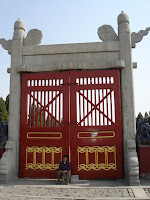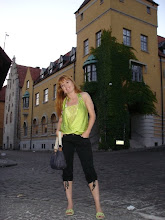The day after my arrival to China, my former colleague Abbas took me sightseeing. To the southeast of the Southern Gate of Beijing City lies an extensive ancient garden. When overlooked from the sky, it is circular in the north and square in the south, a pattern symbolic of the ancient belief that heaven was round and the earth square. A stone-paved main road is running from the north to the south. In the south there is the white Circular Mound Altar; in the north there is a round main hall with blue tiles and golden roofs; to the west of the main road there are exquisite square palaces.
It was a beautiful and hot summer’s day, perfect to see the Temple of Heaven. Built by the Emperor Yongle during the Ming Dynasty in the early 15th century (1420), this was where the emperor renewed his mandate with heaven at every winter solstice, offered sacrifices to Heaven and prayed for a plentiful harvest.

Abbas at Zhaoheng Gate (South Gate)

Me at the Circular Mound Altar
In 1530, people offered to Heaven and Earth separately, so the Circular Mound Altar was built. It has three terraces made of Artemisia leaf gray marbles. In the center of the upper terrace there is a raised round marble called “Heavenly Center Stone” or “Supreme Ultimate Stone” with a special acoustic resonance so that when you stand on it and speak it gives a loud and resonant effect “as of speaking with God”.



Danbi Bridge - The path is one meter high at its southern end and rises to four meters high at the northern tip, signifying that it is stepping up towards heaven.









No comments:
Post a Comment